Mechanics Stay The Same
The baseball swing is a series of events or actions that build one upon the other in sequence. If one of those actions is either lost or changed during the swing, it will disrupt the entire swing.Look at the following illustrations of Hall Of Famer Chipper Jones to see how the basic mechanics of the swing stay the same regardless of where the pitch is.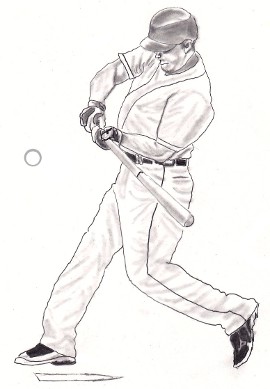
This pitch to Chipper is about belt high and inside. Let's see how he handles it.
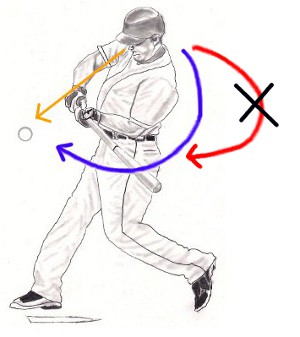
Both of his eyes are on the ball. He's not dropping or "dumping" the barrel behind him. His swing path is down, then up through the baseball.
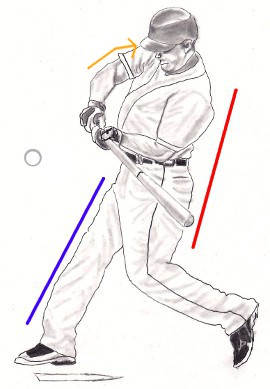
He has a slight backward tilt. His front shoulder is not opening horizontally toward the first base dugout. It's moving up and back. He's clearly against his firm front leg.
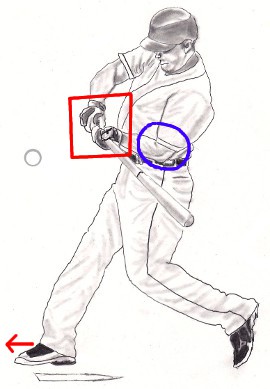
His rear elbow is close to his hip and his hands are past his body. Even though this pitch is inside, he still keeps his hands inside the ball. He is not swinging from the outside of the plate, across to the inside of the plate.
Also, his front foot is open which allows his hips to freely open all the way.
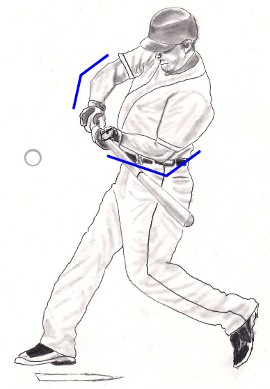
He's not trying to hit the ball with his arms extended two feet out in front of himself. Chipper is still keeping his hands inside the ball and letting the ball travel deeper in the strike zone even though this is an inside pitch. Arm extension happens after contact.
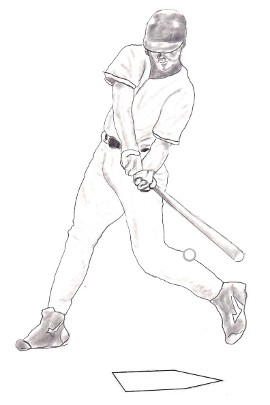
This pitch to Chipper is low and and outside.
Look where the baseball is. Deep in the strike zone. The ball is on the back half of the plate. This ball is headed for his opposite field gap.
The only difference is that Chipper let the ball travel deeper in the strike zone and his bat is tilted more vertical. His upper body is "tilted" more towards home plate. This allows him to drop his bat more vertical to get his bat head to the outside pitch without collapsing his front leg.
The key to hitting a low pitch is NOT to bend your front knee to "get down" to the pitch. It's tilting more toward the plate which allows you to increase the vertical angle of the bat.
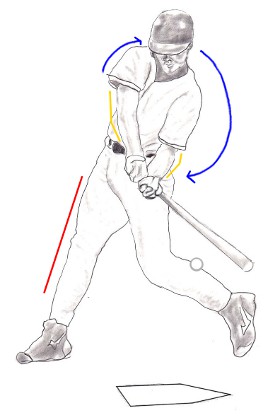
Again, both eyes are on the ball. His swing path hasn't changed. It's down and then up through the baseball. He's still against his firm front leg. His hands are still inside, between him and the baseball.
Chipper's arms are still bent at contact. And his front shoulder is still moving up and back which automatically gives him the backward tilt.
His rear elbow is tucked against his body and his hands are in front of his body. He's clearly still staying inside the ball with his swing. His front foot is open. He's NOT "reaching out" with his bat to hit this outside pitch.
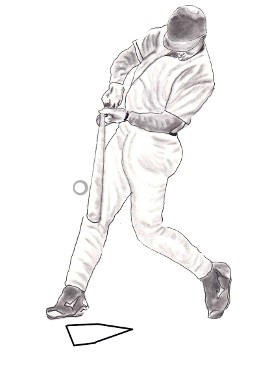
This pitch is low and inside.
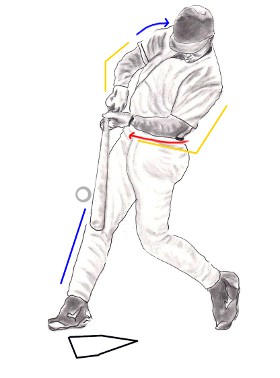
Once again, Chipper's mechanics stay the same. The difference in this swing compared to the high inside pitch is the angle of his bat. And the ball is not as deep in the strike zone.
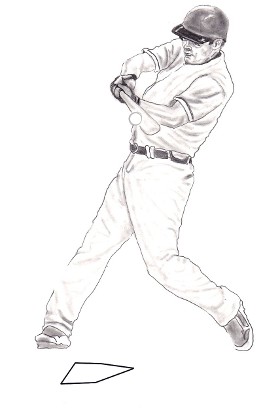
High inside pitch.
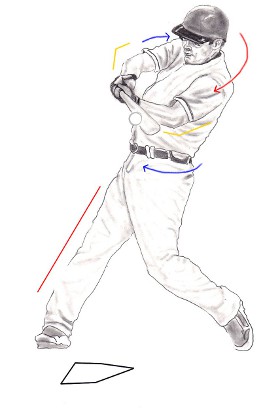
The mechanics of the swing stay the same. It's all about the vertical angle of the bat and the depth of the pitch in the strike zone.
The following illustration is Chipper's "tilt" toward the plate on an inside pitch verses an outside pitch.
Chipper's "tilt" on an inside pitch verses an outside pitch. He is also not collapsing his front leg to get down lower to get to the pitch. He let the ball get deeper in the strike zone on the outside pitch.
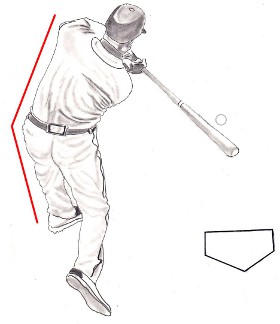
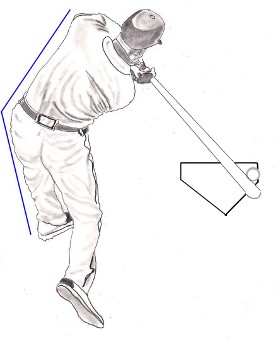
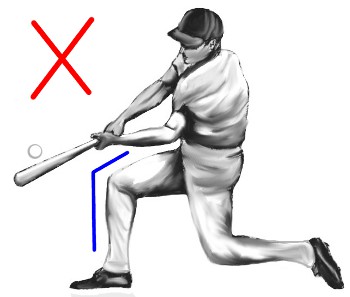
This hitter is bending his front leg to get to the low pitch. By doing this he is collapsing his firm foundation and his entire swing will fall apart. This causes this hitter to "reach" for the pitch instead of letting the ball travel deeper in the strike zone.
Here's one more look.
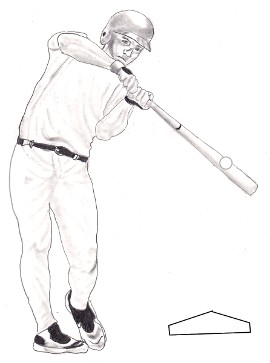
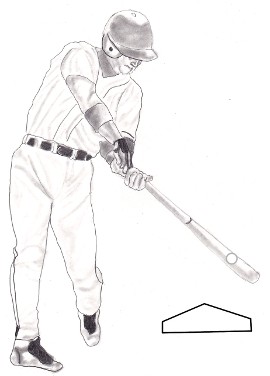
Where ever the pitch is, the mechanics of the swing are the same. The "tilt" of the upper torso towards the plate and the vertical angle of the bat is the only difference.
All Rights Reserved.